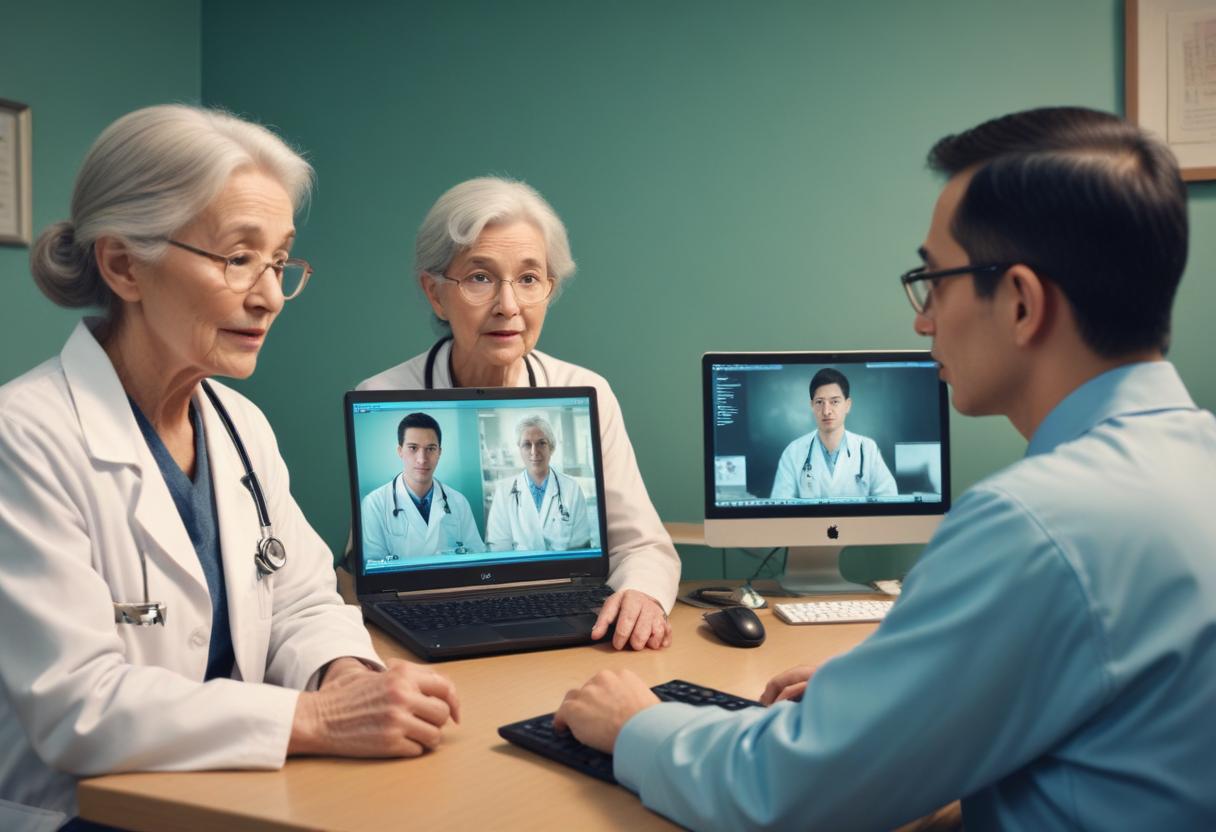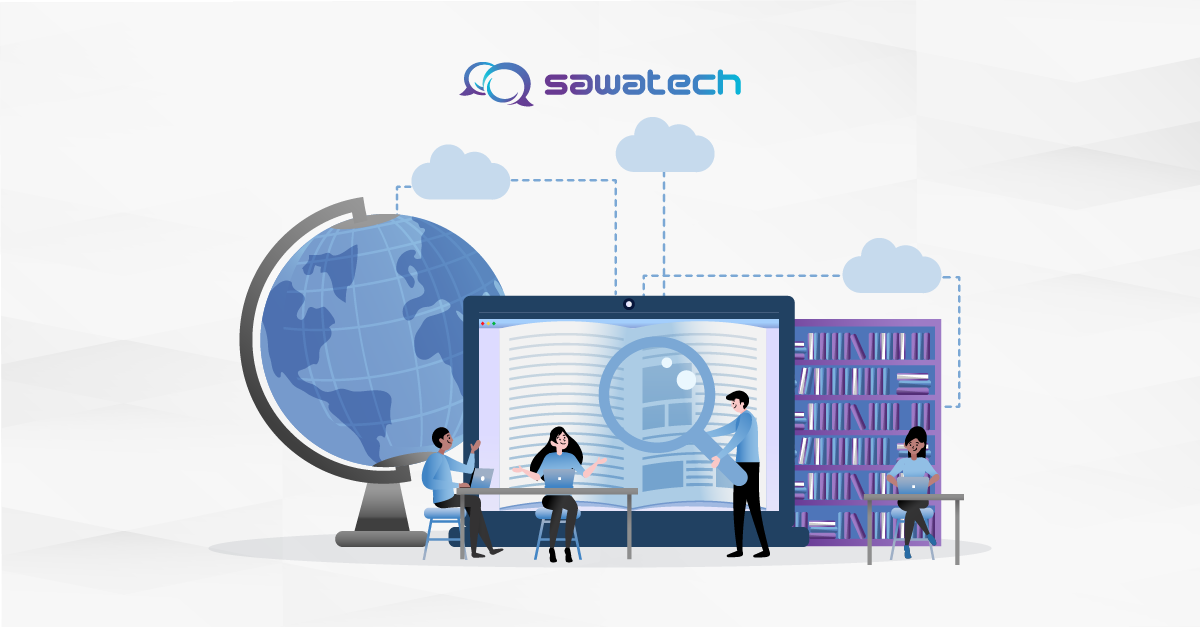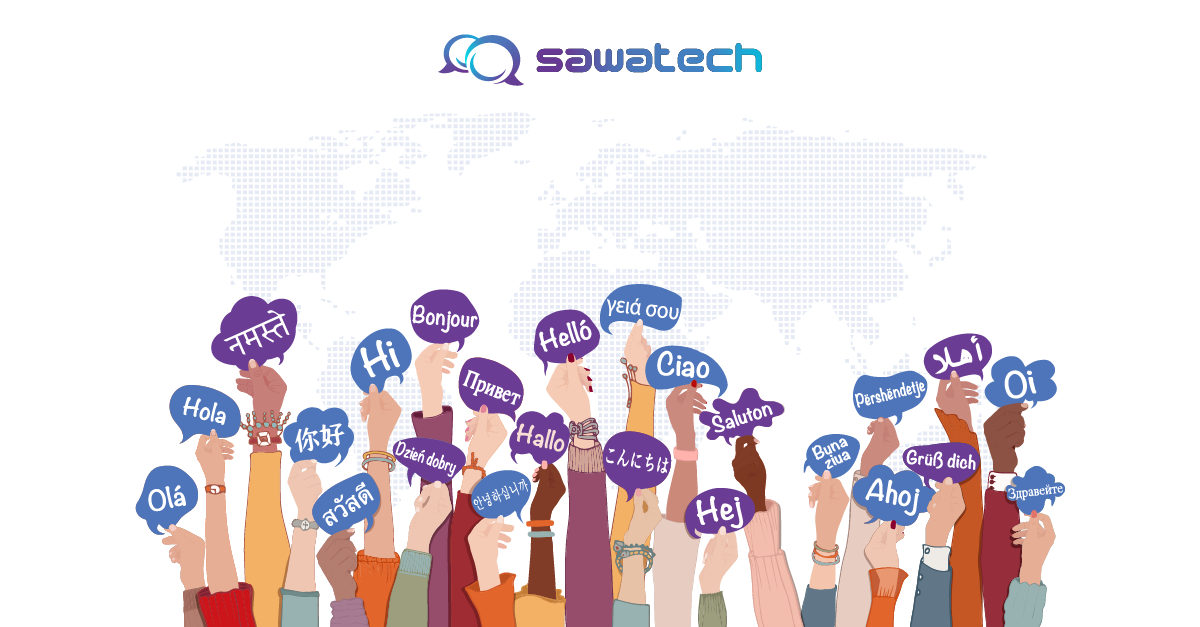The Importance of Accuracy in Medical Translation
Medical translations are more important than one might assume because a single mistranslation might endanger a person’s life. There have been numerous examples of people dying or their illnesses worsening due to a lack of correct medical translation. A minor disease can become a life-threatening condition for a patient as a result of an incorrect interpretation of a medical report.
Accuracy in translation must extend to the drugstore and doctor’s offices as well. According to research, non-native language speakers frequently encounter false prescription information, including what can appear to be sheer gibberish on badly-translated pharmaceutical labels.
Further consequences can result from inaccurate professional medical translations, even more than from a single doctor-patient encounter. It should be noted, a patient’s medical record is essential to any further care. When a doctor’s perceptions of a patient are mistranslated, incorrectly translated statements on their part could negatively impact the patient’s future quality of care. For example, a patient may be labeled as “aggressive” or “angry” while the original report only states “upset.”
Impact of Medical Translation on Patient Care
By using medical translation, all patients are guaranteed to have the information they require in a language they can comprehend. Understanding medical conditions and treatment alternatives is essential for giving informed consent as well. Translation services such as prescription translation, clinical trial translation, and medical record translation do more than simply translate content between languages—they also guarantee patient safety and care.
By enhancing patient satisfaction and lowering medical errors, medical translation can greatly enhance patient communication. This improves health outcomes and boosts the reputation of healthcare professionals.
Understanding what VRI is all about
A form of language interpretation called virtual remote interpretation (VRI), sometimes referred to as video remote interpretation, connects an interpreter with their audience virtually while maintaining real-time communication from an off-site location. This type of interpreting was initially developed to provide ASL (American Sign Language) interpretation for clients who were deaf or had difficulty hearing. It was especially useful in rural regions where there were not enough in-person ASL (American Sign Language) interpreters available. Today, it is widely used through a wide range of languages and contexts.
Advantages of VRI in the Healthcare Industry
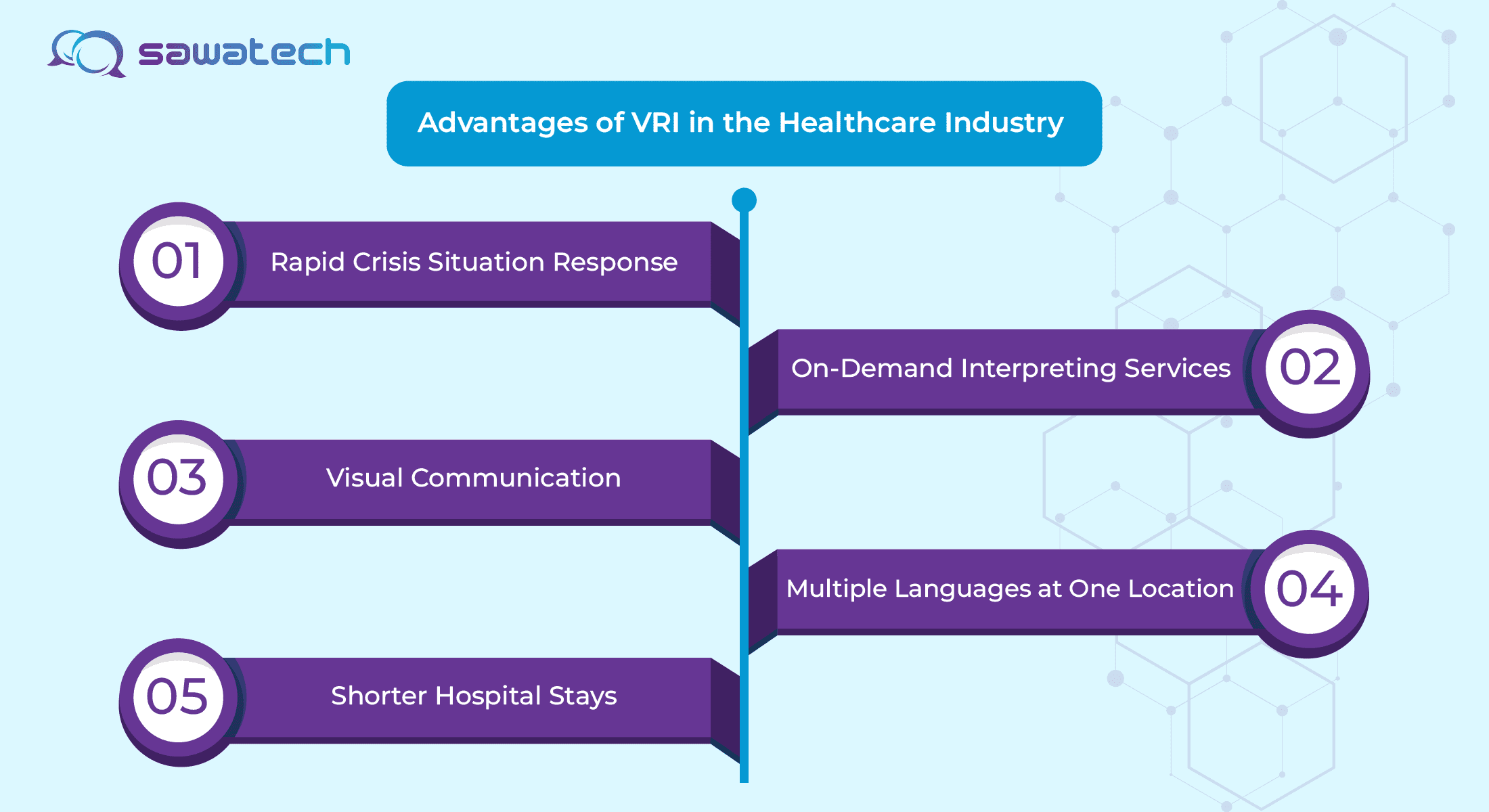
- Rapid Crisis Situation Response: VRI provides both spoken and sign language fast response capabilities. When a medical interpreter is required, VRI makes it easier for you to connect with a practitioner who can provide interpretation services in a matter of seconds.
- On-Demand Interpreting Services: Medical professionals frequently deal with unplanned events and emergencies. In order to address linguistic support demands, these circumstances frequently necessitate the usage of remote interpreters. It provides assistance in obtaining a medical interpreter when necessary.
- Visual Communication: VRI helps patients and interpreters communicate non-verbally by allowing patients to view the interpreter’s facial expressions, in addition to allowing the interpreter to determine whether the patients are understanding what is being said. VRI improves the accuracy in interpretation when compared to telephone interpretation. It also guarantees that the patient’s message is understood correctly. Furthermore, it forges a personal bond between all parties, which facilitates a smoother flow of discourse.
- Multiple Languages at One Location: Hospital employees frequently interact with several foreign languages throughout the course of a day. There are many language possibilities available with VRI. With just the click of a button, healthcare providers can access all of these languages. If a certain language isn’t spoken regularly and there is no available translator, VRI is a great way to overcome this frequent language barrier.
- Shorter Hospital Stays: According to certain research, LEP (Limited English Proficiency) patients have 6% shorter hospital stays than native English speakers for specific diseases. Improved communication puts more emphasis on providing care in a more effective manner. Thus, the amount of time each patient spends in the hospital is decreased.
Challenges in Medical Translation and VRI
- Technological Difficulties: VRI does not require a lot of hardware or software. But tech issues, be it a computer virus or malfunction, can prevent smooth communication. Also, with VRI, you are required to use a steady internet connection. In metropolitan areas, ensuring dependable connectivity is a comparatively simpler matter. However, people who are looking for language support, for example, in rural areas, may run into problems, which could compromise the session’s continuity and quality.
- Security Concerns: Information sharing about communication routes is one of the most difficult aspects with VRI. As a result, making sure the session is taking place on a safe platform is crucial. Trans-Linguist Interactive complies with international data security standards; which is good for those who are searching for a system with a zero chance of data breach.
- User Tech Knowledge: VRI requires the user to comprehend and adjust to the technology in order to be used efficiently. Some users might be skilled or pick up on the capability fast, but others might go through a learning curve that affects how well they use and perceive the information at first. Giving VRI users the necessary instruction and training will help to solve this issue. When an emergency session is necessary and prior training is not available, it isn’t always viable. A face-to-face interpretation is ideal in these situations.
- The complex nature of medical terminology: The study of medical terminology is a highly specialized and intricate field. Beyond a strong foundation in language, comprehending and translating medical terminology calls for a strong background in medicine. Every term has a distinct, exact meaning, and a translation error can potentially result in a real-lief tragedy, all caused by just a misunderstanding. With these kinds of strict specifications, a normal translator could get into trouble. Because of this, medical translation always needs the assistance of specialist medical translators who can combine their in-depth linguistic knowledge with a particular knowledge of the medical industry. It takes a combination of language and medical knowledge to guarantee appropriate and accurate translations.
- The necessity of cultural awareness: Although medicine is a science, it shares characteristics with fields that are typically thought of as humanistic because of how deeply it interacts with a person’s culture and personal beliefs: Different cultures may interpret the same ailment differently, and they may therefore recommend different remedies. This means that translating medical texts requires not just linguistic skills but also cultural sensitivity and knowledge. These cultural quirks must be recognized by a highly skilled medical translator, who will also be able to modify the text while honoring cultural nuance. This is especially crucial when it comes to informed consent, patient instructions, and health education materials. Cultural sensitivity can mean the difference between safe patient care and potentially dangerous situations like the risk of misunderstandings, automatic rejections, or loss of user confidence.
- The unavailability of trained translators: Translators with specialized training and experience in medicine are needed for medical translation. Medical translation is a true level of specialization that cannot be undervalued, as not many translators can handle the intricacy and specificity of medical language. There is a considerable need for translators with specialized medical training. When translating into less widely used languages, there may be a greater frequency of a qualified translator shortage in this profession.
Best Practices for Implementing Medical Translation and VRI
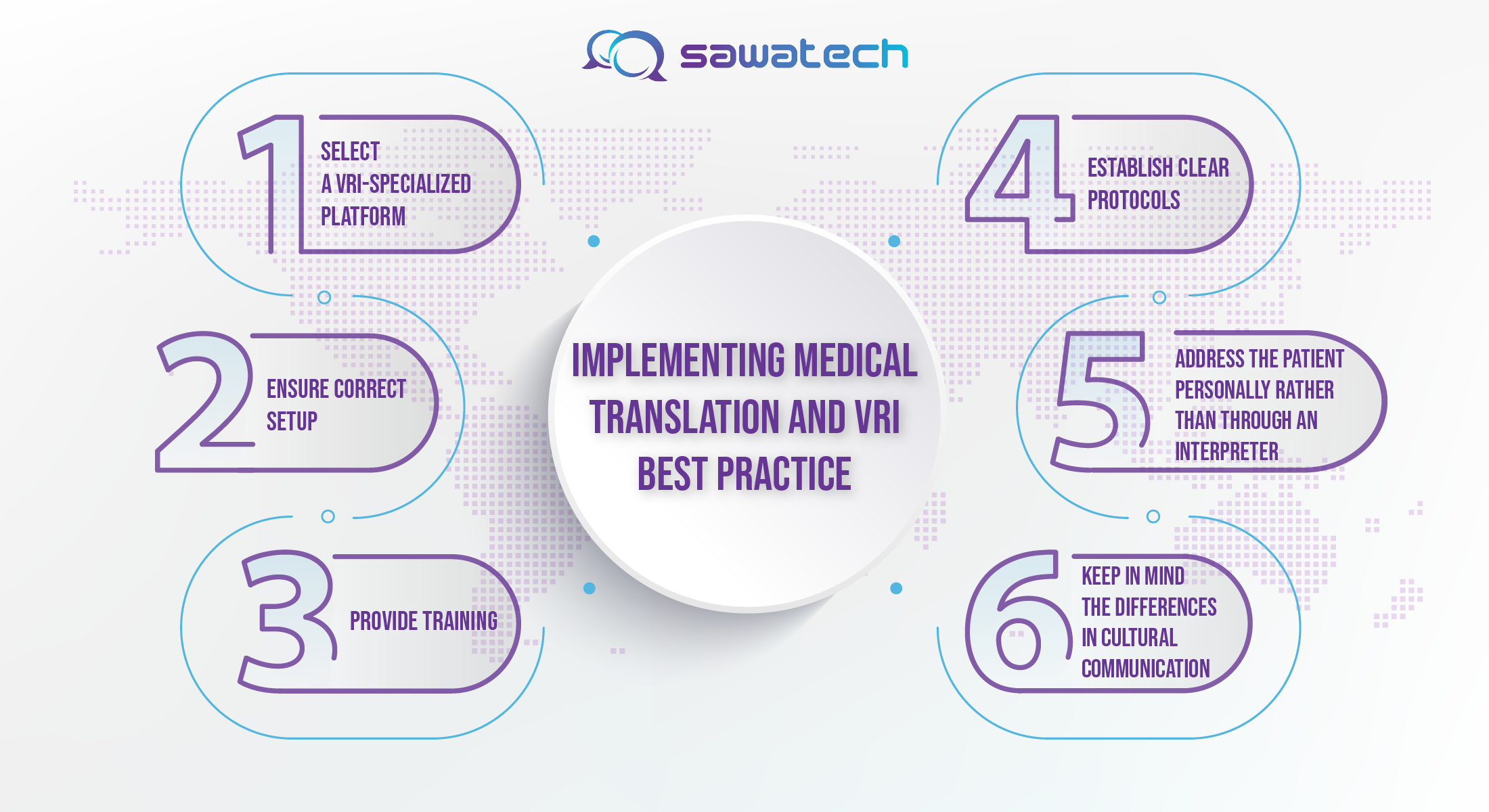
- Select a VRI-Specialized Platform: Selecting the appropriate platform is crucial to the success of VRI sessions. Users are guaranteed a smooth and productive VRI experience when key elements are carefully considered. Give accessibility features a priority, making sure the platform meets a range of requirements with features including assistive technology, a user-friendly interface, and multi-device support. A smooth interface with widely used video-conferencing systems increases VRI meetings’ adaptability. Data security and confidentiality should be another non-negotiable element. Choose a platform that has industry recognized standards, like end-to-end encryption. In order to reduce the likelihood of dealing with any technical issues down the road, consider whether the provider offers technical support or not.
- Ensure Correct Setup: To facilitate easy communication, the important parties should make sure they have a reliable internet connection. Should any of the parties’ encounter problems with connectivity, they ought to notify each other in advance. To get the best outcomes during the session, the people in question should simultaneously use dependable hardware and make sure that all of their equipment including the device, microphone, and webcam is operating as intended.
- Provide Training: Before a scheduled session, organizers should provide thorough training sessions for both users and interpreters, as not everyone adjusts to VRI technology instantly. Understanding the UI of the platform and VRI technology can enhance the interaction and communication between the two parties. Should an emergency session be necessary, the coordinator should find interpreters who are already proficient in using VRI technology.
- Establish Clear Protocols: Any questions that either party may have can be answered at the pre-session debriefing. Multilingual meetings and complicated settings call for an even greater need for an organized approach to communication procedures. Protocols like how to take turns, what to do in case of questions or technical issues, how to clear up any misunderstandings, platform capabilities and functionality, et cetera, should all be covered during a debriefing session.
- Address the patient personally rather than through an interpreter: Patients in the medical field require the assurance that comes from in-person conversations. Remember that even if you are communicating through an interpreter, the patient is the intended recipient of the information you are sharing. Refer to the patient by yourself (you, your, you’re) and refrain from giving out preemptive orders like “ask the patient” or “tell her/him.”.
- Keep in mind the differences in cultural communication: There might not be a workable translation for some English ideas into other languages. A top-notch interpreter will typically alert you to any material that can cause a cultural misunderstanding and assist you in phrasing the message more effectively. Keep in mind cultural competency techniques, which center on communicating effectively across cultural divides.
Conclusion
Language diversity makes interpreting services a critical part of patient care throughout every step of the patient journey. Effective communication is at the center of positive outcomes when patients need medical care, but if there’s a language barrier between the healthcare provider and the patient, a medical translation service provider such as Sawatech can help bridge the gap to ensure higher levels of patient satisfaction.

